How To Blur Background While Taking Photos
A blurred background draws the focus to what's of import. It too often plays a part in differentiating the professional portrait from the coincidental snapshot.
But how, exactly, do you lot create a blurry background? Through a mixture of gear, settings, and subject field placement.
Hither'due south how.

[ExpertPhotography is supported by readers. Product links on ExpertPhotography are referral links. If you use one of these and buy something we make a little flake of money. Need more info? See how it all works here.]


What Yous'll Need to Create a Blurred Background
The gear that you use will make that blurred groundwork easier or more hard to reach. While getting that background blur isn't all most the gear, it'south a big part of the equation.
Here's the gear that's all-time for background blur, and why.
Camera With a Larger Sensor
This can be a mirrorless or DSLR camera.
The larger the photographic camera sensor is, the easier information technology is to get that background blur. That'southward why you lot meet smartphone companies creating false background mistiness through software in portrait modes. The sensors are so small that it's difficult to create that groundwork blur in camera.
A full frame camera will get you the most background blur (unless of course you have the budget for medium format). Simply even a upkeep DSLR or mirrorless photographic camera or a compact photographic camera with an APS-C sensor inside will all the same offer a proficient corporeality of that background mistiness.
Broad Aperture Lens
The aperture of the lens is i setting that helps create that background mistiness. But unlike lenses take different aperture settings bachelor. Ideally, for a blurred background, you should use a lens that has at to the lowest degree an f/two.8 aperture available.
Lower f-numbers will offer fifty-fifty more than blur. A 50mm f/ane.8 is even better, with several manufacturers offer options for less than $300.
An f/1.4 is even blurrier, but these lenses sit at a much higher price point.
Telephoto Lens (Optional)
Opposite to popular belief, a lens with a longer focal length doesn't really create more blur. Yet, the longer the focal length, the more compressed (or closer) that groundwork appears.
That brings that mistiness closer and tends to exaggerate the blur more than than brusk lenses.
Background blur is exaggerated with a longer lens. But it's still possible to become nice background mistiness with a broad angle lens.
Note that portrait photographers also tend to prefer longer focal lengths. These also tend to be more flattering.
How to Blur a Background Using Aperture
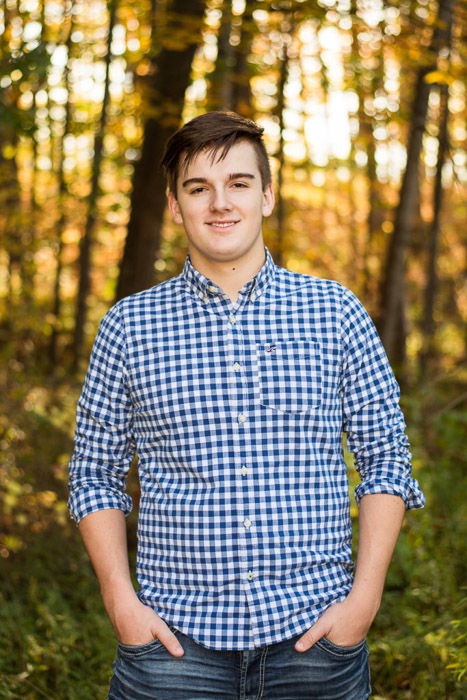
Gear is part of the equation, but the camera settings are simply every bit essential. The photographic camera setting that determines that background mistiness is chosen aperture. This refers to how broad (or narrow) the hole in the lens is.
Aperture is designated by f-numbers; higher numbers mean a smaller lens opening. An f/i.8 is a wide aperture, and f/11 is a narrow aperture.
A wide aperture volition create what's called a shallow depth of field. In an image with a shallow depth of field, very petty of the image is in focus.
There may be an inch of distance in the image that's abrupt, and the balance of the objects exterior that range is blurred. That shallow depth of field is key to getting that background blur.
The narrower your aperture is, the more than of the epitome is precipitous. That tiny bit of altitude that'southward in focus at f/1.8 expands as you increase the aperture.
A wide aperture creates that soft, blurred background. A narrow aperture leaves more of the image in focus.
Simply because a broad aperture creates that blurred groundwork doesn't hateful you e'er want to shoot portraits at the widest aperture that your lens allows. If y'all shoot a group photo at f/ane.8, almost of the group won't exist in focus.
That additional depth of field is needed when taking portraits of more than than one person, unless anybody is standing the verbal same distance from the camera.

Even when photographing a single person, don't leave the aperture at the widest possible setting. A narrower discontinuity might be necessary to become both eyes in focus if the subject is standing at a slant.
The portrait groundwork is an important function of the image in environmental portraits, for example. So apply a narrower aperture to keep more of those background details intact.
So how practise you adjust the discontinuity for that groundwork blur? Use aperture priority fashion on your camera, or, transmission fashion for more advanced users.
Every camera is a bit different. But typically in that aperture priority mode, 1 of the control wheels on the right side of the camera adjusts discontinuity. On some cameras/lenses, the aperture control is around the lens barrel.
You should see those f-numbers change as you movement the command. This will be either on the screen or displayed on the viewfinder. If y'all're unsure, consult your camera'southward user manual.
Every bit you conform your aperture, make sure the shutter speed doesn't fall as well depression. You'll cease up with an entirely different kind of blur (and not a pleasant one either).
As a guideline, yous should be using a shutter speed with that lesser number at or higher than the lens you are using. A 50mm lens should use at least 1/50th handheld, for example.
If the shutter speed drops as well low while in discontinuity priority mode, increase the camera's ISO.
Discontinuity priority mode will become you started shooting those blurry backgrounds. Simply manual mode will help you rest it all and command the entire exposure. Learn more about transmission mode hither.
How to Blur a Background With Subject Placement
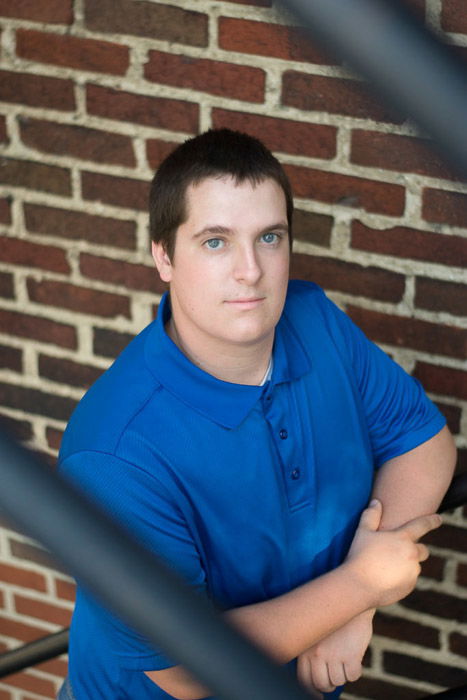
Discontinuity and gear plays a big office in how blurred that background looks. But there's one more than piece to the puzzle on soft backgrounds — and information technology's the simplest of the bunch.
A lens focuses based on distance — something the same distance from the camera as the subject volition be simply equally sharp.
The farther away the background is from the subject, the blurrier that background volition be. If y'all take a portrait of someone leaning against a brick wall, even at f/1.8, that wall volition only be slightly blurred.
Try taking a portrait of someone standing several feet in front of that same wall. The wall will create a much softer background.
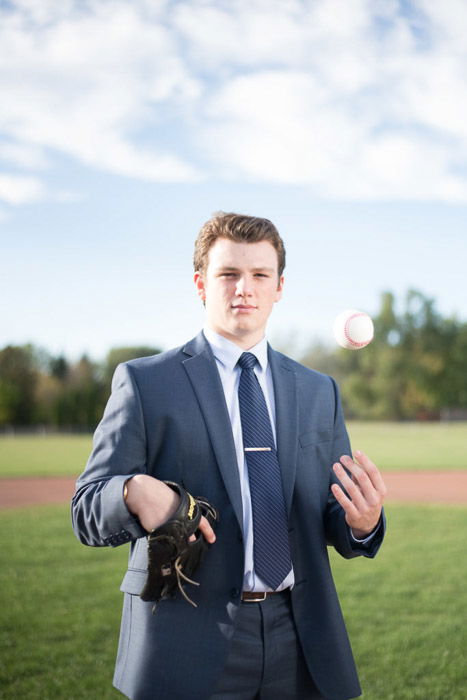
Try moving the bailiwick farther away from the groundwork. Or add more empty space between the subject and the background. This will help create more of that blur.
How to Create Bokeh in a Blurred Background
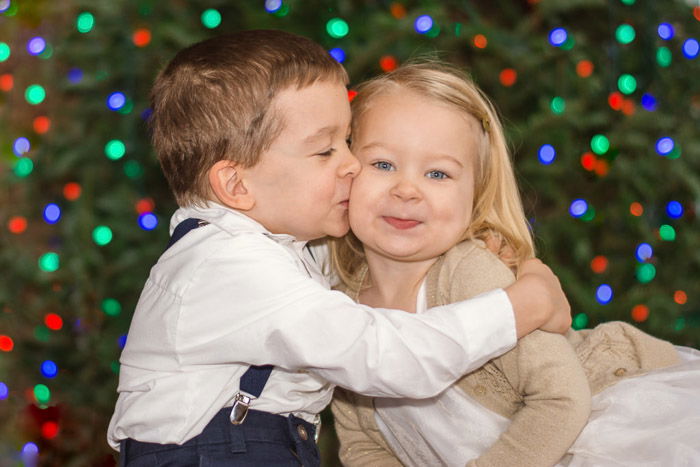
Bokeh is a photography term that stems from a Japanese give-and-take meaning blur. Bokeh refers to the quality of the blur in an paradigm. But it'due south oftentimes besides associated with the circular, out-of-focus points of light in an image.
Those blurry lights oft create an excellent groundwork. This leaves many new photographers asking how to create bokeh.
The answer is simple — create that background blur using gear, aperture and distance. But use a background with many points of low-cal.
Christmas lights or twinkle lights in the background, for example, create excellent bokeh.
Twinkle lights aren't the merely mode to create bokeh. Highlights or brilliant points in the groundwork tin also be rendered as circular bokeh. For example, the sun hitting the leaves on a tree in the background.
The lights of a city skyline, the glow of a crackling fireplace, a crumpled piece of tinfoil — there are many different ways to create bokeh. Y'all just have to detect it and mix with discontinuity, subject placement and gear.
Larn to look for lights and highlights. So you lot'll be able to find easy backgrounds that create excellent bokeh.
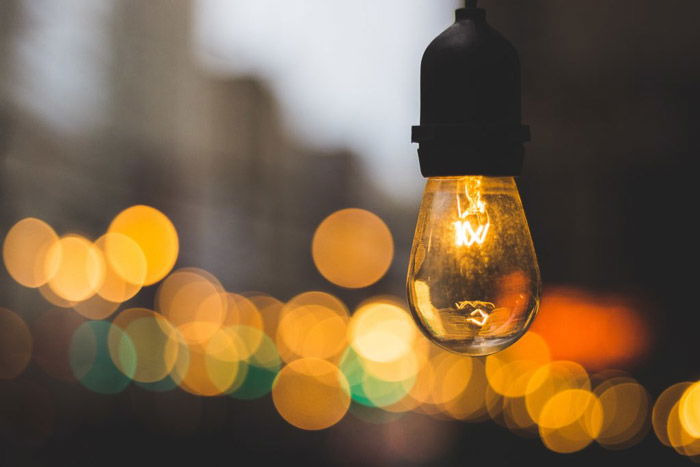
Conclusion
A blurred background is created through a mix of gear, aperture, and subject placement. Photographers can combine all three to create the most groundwork mistiness. Or y'all can mix and match to what'south bachelor.
If you don't take a wide aperture lens, you can create more altitude between the subject area and the background. If y'all want the subject posed confronting a brick wall, you can use a broad discontinuity lens. It volition make that background as soft equally possible.
Remember, blurry backgrounds are a mix of:
- Gear (wide aperture lens, larger sensor)
- Aperture (lower numbers hateful more blur)
- Altitude between the subject and the background (more distance means more than blur)
Adding in lights or simply highlights from the available natural low-cal, adds circular, blurry lights to create excellent bokeh.
Used together, a blurred background tin can hide away all the distractions and draw the eye to the subject.
How To Blur Background While Taking Photos,
Source: https://expertphotography.com/blurred-background-portrait/
Posted by: broomfife1996.blogspot.com


0 Response to "How To Blur Background While Taking Photos"
Post a Comment